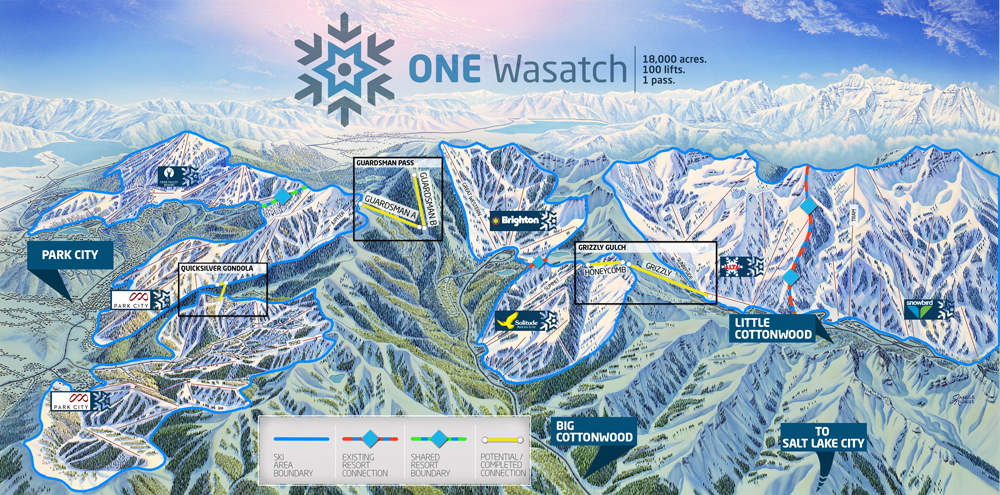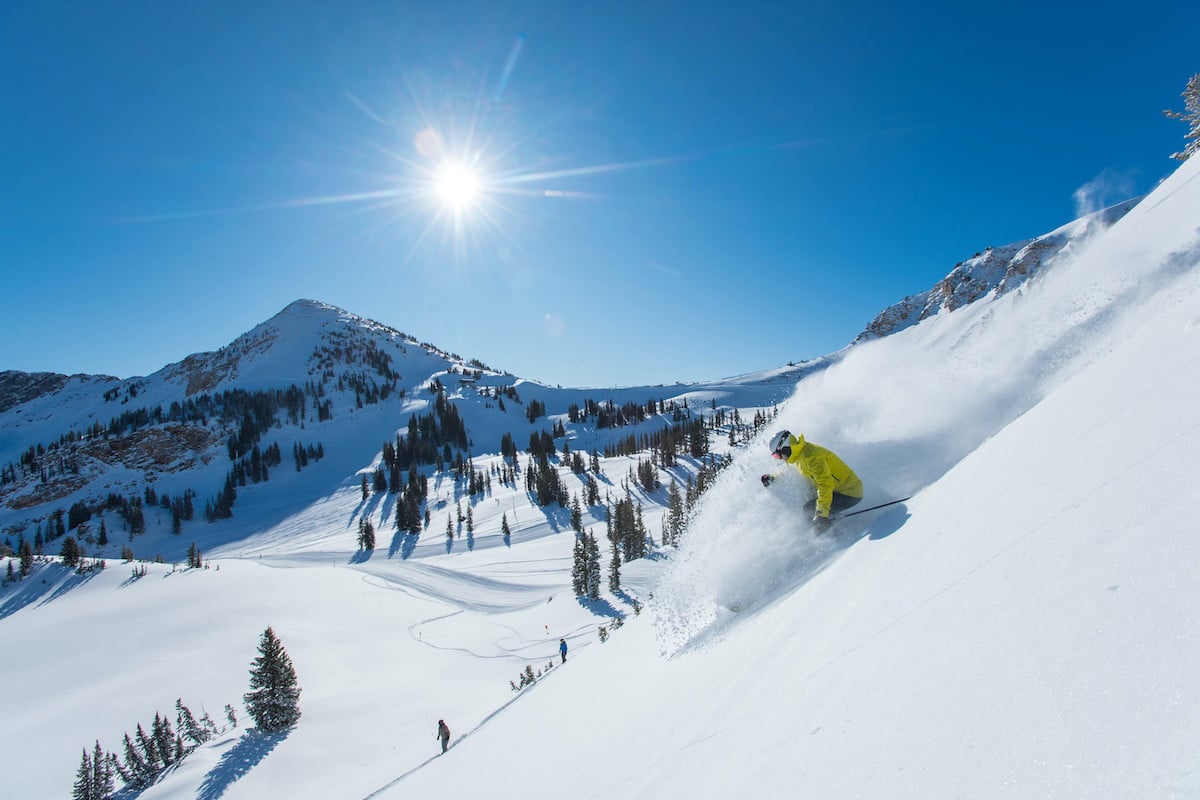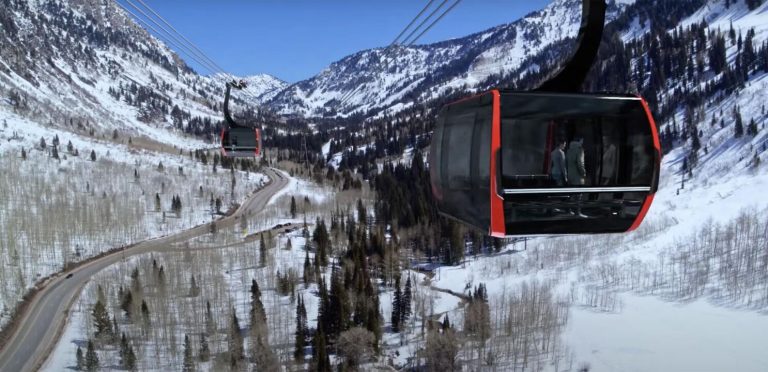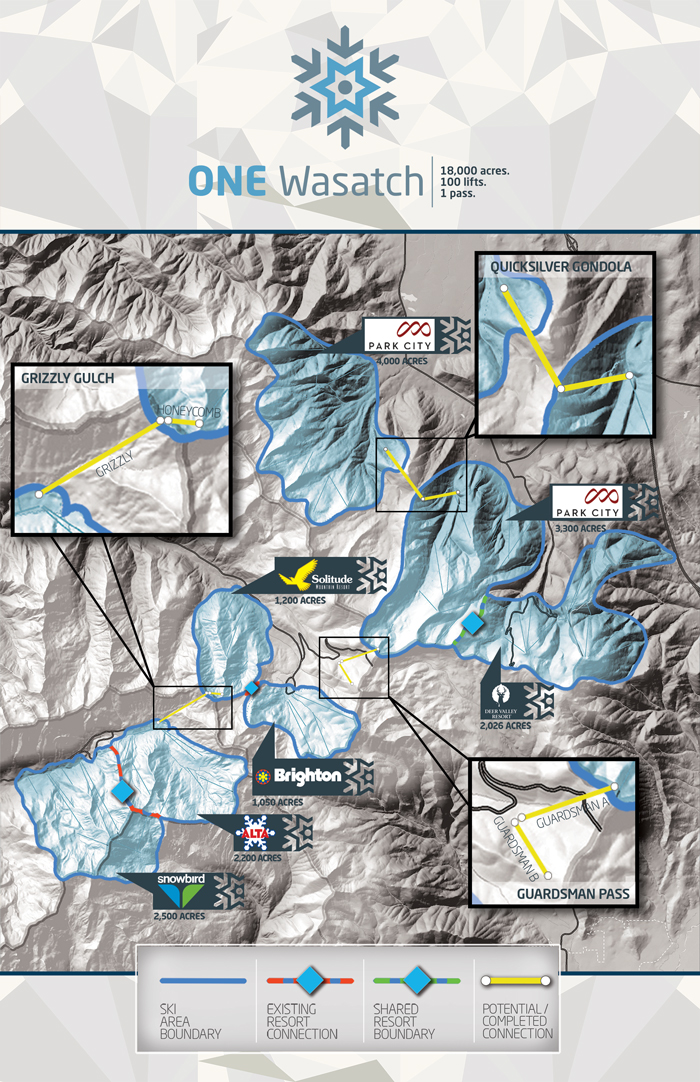
For years, the concept of ‘ONE Wasatch’ has fascinated skiers and snowboarders who dream of an interconnected ski experience in Utah’s Wasatch Mountains. The proposal aims to link six major ski resorts—Alta, Snowbird, Brighton, Solitude, Park City Mountain, and Deer Valley—via a series of lifts and runs, creating one of the largest ski networks in North America. It would include over 100 lifts and 750 runs. At first, it seems like a no-brainer.
The website onewasatch.com lays out the vision of creating an 18,000-acre, efficient, and enjoyable interconnected mountain resort experience, but it is outdated and needs updating. The website states:
“ONE Wasatch is a concept, not a plan. At this time, resort partners have no specific execution timelines or chairlift alignments. The goal of ONE Wasatch is to establish a vision for a one-of-a-kind mountain experience by providing information, outlining the process, encouraging dialog and listening to feedback.”
This could not be truer as, despite the enthusiasm from some resort operators and ski enthusiasts, the plan has never come to fruition. Several key factors have contributed to the stagnation of the ONE Wasatch vision, ranging from environmental concerns to economic feasibility and public resistance.

Resort Conflicts and Business Interests
While some resorts have shown interest in the idea, others have been hesitant or outright opposed. The challenge lies in the competing business strategies of different ski operators. Resorts owned by different companies have varying pricing models, ticketing systems, and brand identities. Deer Valley, for example, has long maintained a skier-only policy, which would conflict with resorts that allow snowboarding.
Another issue is the allocation of costs and revenues. If certain resorts benefit more from the interconnected lift system than others, disputes over funding and revenue-sharing agreements become inevitable. Finding common ground among all involved parties has proven to be a significant challenge.
Public and Backcountry User Resistance
Beyond environmental groups, a large contingent of backcountry skiers, snowboarders, and outdoor enthusiasts oppose the concept for a different reason—they fear losing access to some of Utah’s most beloved backcountry terrain. Many areas that would be affected by resort expansion are currently accessible to the public for free. If the ski resorts were to expand, these areas could become restricted or require lift tickets for access, reducing opportunities for non-resort skiers and altering the character of the region. Additionally, some resort-goers worry that creating a massive, interconnected ski area would lead to over-commercialization and increased skier density, ultimately reducing the quality of the skiing experience rather than enhancing it.

Infrastructure Challenges and Costs
Developing the infrastructure to connect all seven resorts would require a large financial investment. The project would necessitate the construction of multiple new ski lifts, gondolas, and possibly even tunnels to link the different canyons.
With Utah’s growing population and the rising number of visitors to its ski resorts, transportation congestion in Big and Little Cottonwood Canyons has become a pressing issue. Instead of pursuing the vision, officials have focused more on improving public transit solutions. One major alternative proposal is a gondola system for Little Cottonwood Canyon, which would alleviate road traffic without expanding resort boundaries.
Given these financial and logistical obstacles, resort operators and local governments have not been willing to commit the necessary funding to make the concept a reality.

Environmental Concerns and Land Use Restrictions
One of the biggest roadblocks to the concept is the environmental impact. The Wasatch Mountains are home to diverse wildlife, pristine alpine environments, and some of Utah’s most critical watersheds. Conservation groups, such as Save Our Canyons and the Wasatch Backcountry Alliance, have been vocal in their opposition, citing concerns over the disruption of natural habitats and loss of backcountry terrain.
Additionally, much of the land between the ski resorts is federally protected or designated as wilderness, meaning development is either highly restricted or outright prohibited. Ski resort expansion in these areas would require special exemptions, which have been historically difficult to obtain.
Furthermore, Salt Lake City depends on the Wasatch Mountains for its drinking water supply. Expanding resort infrastructure in these areas could potentially threaten water quality, leading city and state officials to be cautious about supporting such a large-scale project.
A Dream That May Never Come True
Despite the allure of creating a European-style interconnected ski region, the challenges facing ONE Wasatch seem too great to overcome in the near future. Environmental protection laws, business conflicts, and public resistance have all played a role in preventing the project from moving forward. Instead, Utah has shifted its focus to improving ski infrastructure in other ways, such as enhancing public transportation options and expanding existing resorts within their current boundaries.
For now, Utah’s ski resorts will remain separate, offering world-class skiing experiences in their own right. While the dream of ONE Wasatch is not officially dead, it remains more of a fantasy than an impending reality. If anything, the conversation around it has underscored the delicate balance between development, conservation, and recreation in Utah’s treasured Wasatch Mountains. While the vision remains a dream for some, the logistical, environmental, and political barriers have kept it from becoming a reality.

The article indicates that the Little Cottonwood Canyon gondola will sole the problem with traffic congestion – wrong, it won’t. Also there are huge traffic issues in Big Cottonwood Canyon.
I believe One Wasatch would reduce congestion. As it would reduce bottlenecking.
Given Yrump does not appear to care too much about the environment – is this not the time to do it. The links between resorts would be non polluting. Europe manages to do major infrastructure without a big problem. Why is the USA so dirty?
The all skiing Alta and Deer Valley resorts need to grow up and change. I’m a skier and love not having boarders, but I think the one Wasatch would be worth the sacrifice.
I don’t agree the resorts have such different commercial objective – they all want to maximise income and reduce risk. They are doing this with the multi resort lift passes.
This would make a unique destination for the USA. The resorts and lobby groups need to get into long pants and forget about diapers and make this happen.